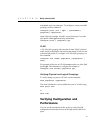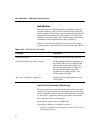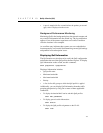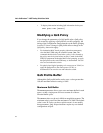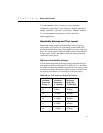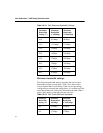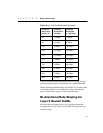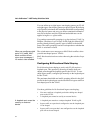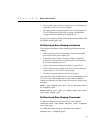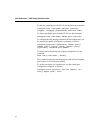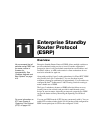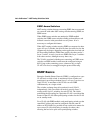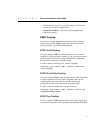
164
Intel
®
NetStructure™ 480T Routing Switch User Guide
You can utilize up to eight ingress rate-shaping queues per VLAN
and eight egress rate-shaping queues per physical port. By defining
a QoS profile’s minimum and maximum bandwidth corresponding
to the physical queue and port, you define committed information
rates for each queue and port. Different bandwidth rates can be
applied to ingress vs. egress traffic.
You can then create traffic groupings (e.g. physical port, VLAN, 1p,
DiffServ, IP address, Layer 4 flow) for the eight pre-defined QoS
profiles, thereby directing specific types of traffic to the desired
queue. The traffic groupings used are not dependent on whether the
traffic is switched or routed.
When you configure switch
ports in L2 mode, MAC-
block conflicts will not
return error messages if
L3 mode is later enabled.
The switch returns error messages on MAC-block conflicts when
you add rate-shaped ports to VLANs.
MAC-block restrictions do not exist when using the switch as Layer
2 only.
Configuring Bi-Directional Rate Shaping
For bi-directional rate shaping to work, each VLAN requires a
loopback port. This operates by directing all traffic from rate-
shaped ports through the loopback port for that VLAN. To rate-
shape ingress traffic, configure QoS normally on the loopback port
for the VLAN.
The maximum bandwidth and traffic grouping defined in the QoS
profile for the loopback port sets the rate limit for ingress traffic on
rate-shaped ports in that VLAN.
Use these guidelines for bi-directional ingress rate shaping:
• You must configure a loopback port before adding rate-shaped
ports to the VLAN.
• A loopback port cannot be used by an external device.
A loopback port cannot be
used by an external
device.
• A loopback port must have a unique loopback VLAN tag ID.
• Ingress traffic on a port that is configured to use the loopback port
is rate-shaped.
• Ingress traffic on a port that is not configured to use the loopback
port will not be rate-shaped.




